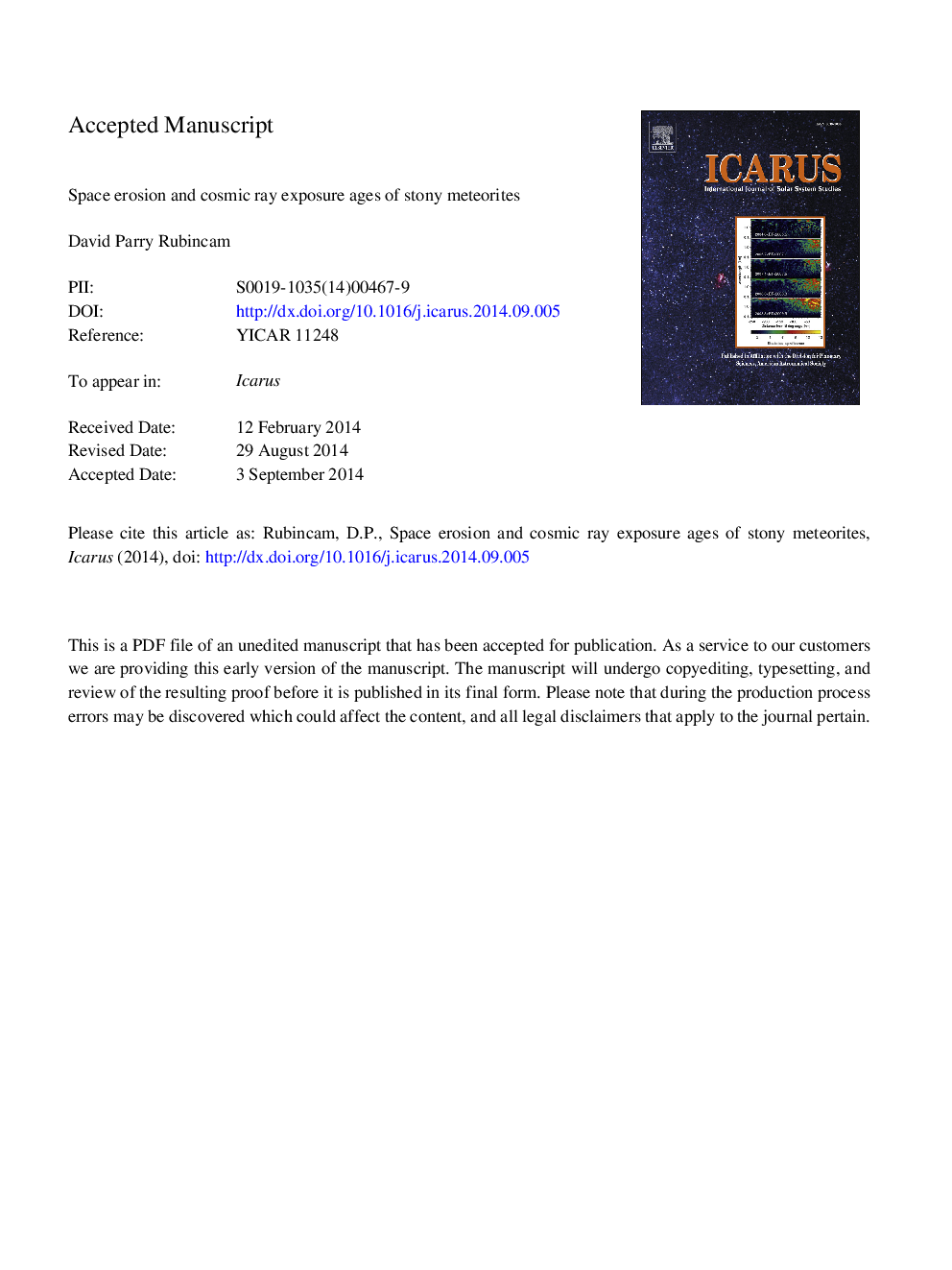| کد مقاله | کد نشریه | سال انتشار | مقاله انگلیسی | نسخه تمام متن |
|---|---|---|---|---|
| 8137404 | 1523545 | 2015 | 54 صفحه PDF | دانلود رایگان |
عنوان انگلیسی مقاله ISI
Space erosion and cosmic ray exposure ages of stony meteorites
ترجمه فارسی عنوان
فرسایش فضا و تابش اشعه کیهانی در سنین از شهاب سنگ های سنگی
دانلود مقاله + سفارش ترجمه
دانلود مقاله ISI انگلیسی
رایگان برای ایرانیان
کلمات کلیدی
اشعه های کیهانی، گرد و غبار بین پلاتین، شهاب سنگها، نور زودیاک،
موضوعات مرتبط
مهندسی و علوم پایه
علوم زمین و سیارات
علوم فضا و نجوم
چکیده انگلیسی
Space erosion from dust impacts may set upper limits on the cosmic ray exposure (CRE) ages of stony meteorites. A meteoroid orbiting within the asteroid belt is bombarded by both cosmic rays and interplanetary dust particles. Galactic cosmic rays penetrate only the first few meters of the meteoroid; deeper regions are shielded. The dust particle impacts create tiny craters on the meteoroid's surface, eroding it away by abrasion at a particular rate. Hence a particular point inside a meteoroid accumulates cosmic ray products only until that point wears away, limiting CRE ages. The results would apply to other regolith-free surfaces in the Solar System as well, so that abrasion may set upper CRE age limits which depend on the dusty environment. Calculations based on N. Divine's dust populations and on micrometeoroid cratering indicate that large stony meteoroids in circular ecliptic orbits at 2Â AU will record 21Ne CRE ages of â¼176Â ÃÂ 106Â y if dust masses are in the range 10â21-10â3Â kg. This is in broad agreement with the maximum observed CRE ages of â¼100Â ÃÂ 106Â y for stones. High erosion rates in the inner Solar System may limit the CRE ages of Near-Earth Asteroids (NEAs) to â¼120Â ÃÂ 106Â y. A characteristic of erosion is that the neon concentrations tend to rise as the surface of the meteorite is approached, rather than drop off as for meteorites with fixed radii. Pristine samples recovered from space may show the rise. If the abrasion rate for stones were a factor of â¼6 larger than found here, then the ages would drop into the 30Â ÃÂ 106Â y range, so that abrasion alone might be able to explain many CRE ages. However, there is no strong evidence for higher abrasion rates, and in any case would probably not be fast enough to explain the youngest ages of 0.1-1Â ÃÂ 106Â y. Further, space erosion is much too slow to explain the â¼600Â ÃÂ 106Â y ages of iron meteorites.
ناشر
Database: Elsevier - ScienceDirect (ساینس دایرکت)
Journal: Icarus - Volume 245, 1 January 2015, Pages 112-121
Journal: Icarus - Volume 245, 1 January 2015, Pages 112-121
نویسندگان
David Parry Rubincam,
